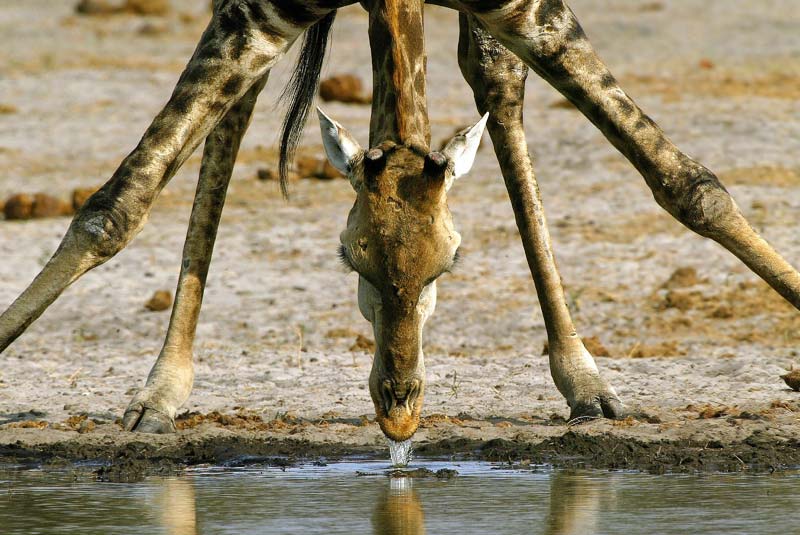
© Michael Poliza PhotographyAll rights reserved.
From the book AFRICA: Drinking Giraffe, Zibalianja Lagoon, Linyanti Reserve, Botswana
If you haven’t heard of the German wildlife and landscape photographer Michael Poliza, well hold on to your hats, his story and photography will blow you away. Once you get to know him, you will never forget him! Once you get a glimpse of just a few of the thousands of images he has captured, you’ll want to see more and include his books in your library of photo coffee table books.
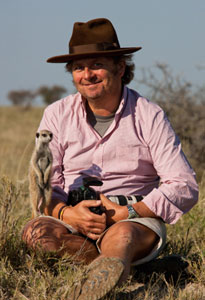
© Michael Poliza Photography
All rights reserved.
Michael Poliza
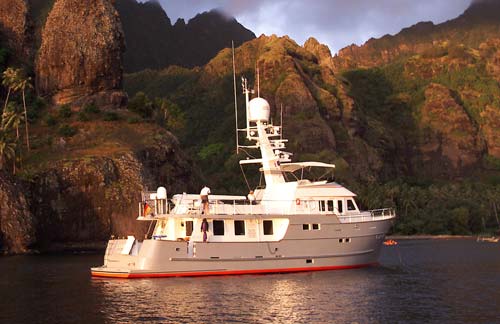
© Michael Poliza Photography All rights reserved.
Fatu Hiva Starship
BIOGRAPHY (* 01.01.1958)
(Majority of biography used with the permission of Anshana Arora at teNeues Publishing, Press Department)
Michael Poliza has never been a man to do things by half measures. That might sound like a cliché, but his life is certainly not. His entire track record shows somebody who jumps into projects with both feet, immersing himself completely in the subject matter and fast becoming seen as a leader in whatever field he chooses to focus. He is a man who has already lived 3 outstanding lives in a short amount of time, all shaped by his uncanny ability to detect a new direction in its early phases, and then to work unstoppably in mastering the subject matter and pushing the boundaries of what is deemed possible or probable.
His drive for success began as a teenage actor. During that time in Germany, he was as well known as any actor could be on the television screen, all the while continuing his schooling.
His second incarnation had the lights shining on him as a businessman. During his time as an exchange student in the USA, Michael first caught a glimpse of the future, and quite how digital that future would be. Returning to Germany, he petitioned IBM to grant him an agency, despite his youth. His relentlessness paid off as he built an impressive business in the IT sector.
By 1997, at a mere 39 years old, he began his third life focusing on digital media. Selling his companies for a small fortune in stock, he had planned to relax for a while, to buy a yacht and sail around the world. But then the crash of the dot.com occurred, and suddenly IT stocks plummeted in value – today, Michael jokes about how he watched
the yacht he intended to build get shorter by a foot every day. Not being a man to give up, he hatched a grand plan: the Starship Millennium Voyage. Journalists and photographers would be invited to join him on board as the boat cruised around the globe to document the state of the world’s wild locations at the turn of the millennium. Sponsors like Sony, Microsoft, Deutsche Telekom, Olympus and the WWF helped to foot the bill, with the output broadcast daily on the Internet and followed by millions of people around the world – an unheard of achievement in those early digital days. Stern magazine was the main media partner, publishing many features on the voyage.
True to his IT roots and passions, he had already embraced digital photography, and his Starship book, published in 2001, was the start to his publishing experience and the very first coffee table book to feature more than 50% digital content. This man has lived the digital age to the full. The lights continued to shine on Michael!
The voyage over, Michael sold the boat and was headed to Madagascar when he stopped by South Africa’s ‘Mother City’ of Cape Town and promptly lost his heart to her. He bought a house on the Atlantic Seaboard, using this as a base for countless visits to the game reserves and nature parks of Southern Africa. Much of this was thanks to a friendship with Wilderness Safaris, who gave him freedom of access in return for the use of his images – a truly symbiotic relationship. A new adventure had begun….
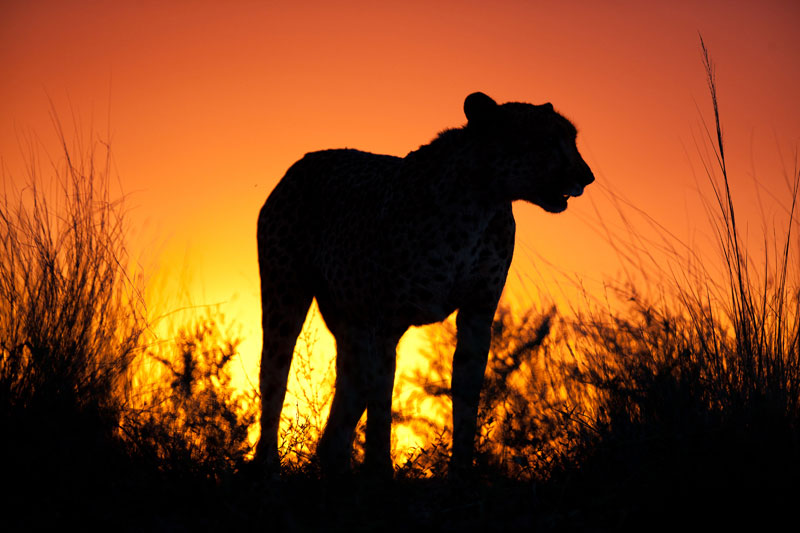
© Michael Poliza PhotographyAll rights reserved.
From the book SOUTH AFRICA: An old male cheetah known to the locals as Spike
(he died of natural cause in March 2010 while the final touches were being put to the “South Africa” book). Tswalu Kalahari Reserve, Northern
THE INTERVIEW
Q. Through the years and your careers leading up to the 1998 launch of the Starship Millennium Voyage, did you always have an interest in the art of photography?
A. Not a whole lot. I was very keen on photography as a teenager, but with my business taking
“center court”, my photography passion got buried for a while. Only in my mid thirties did it surface again. But I only started calling myself a photographer about 5 years ago
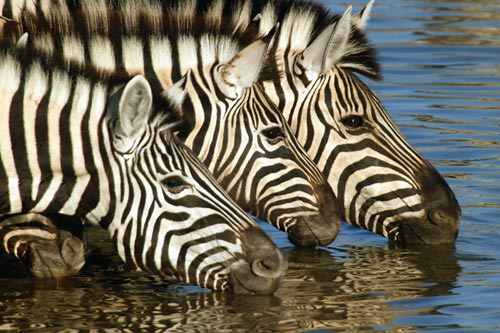
© Michael Poliza Photography All rights reserved.
From the book AFRICA: Zebras, Etosha National Park, Namibia
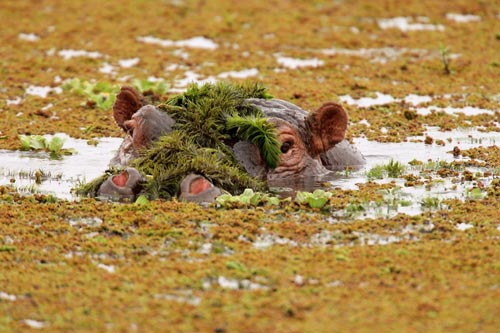
© Michael Poliza Photography All rights reserved.
From the book AFRICA: Hippo under cover, Tortilis Camp, Amboseli National Park, Kenya
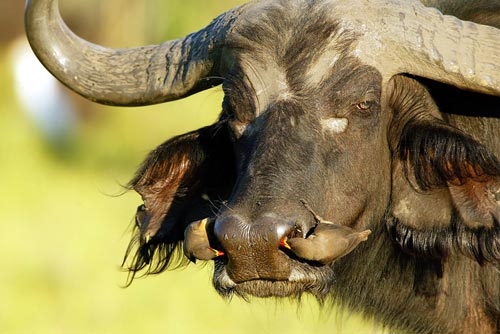
© Michael Poliza Photography All rights reserved.
From the book AFRICA: Yellow-billed Oxpeckers clean Buffalo’s nose, Duba Plains, Okavango Delta, Botswana
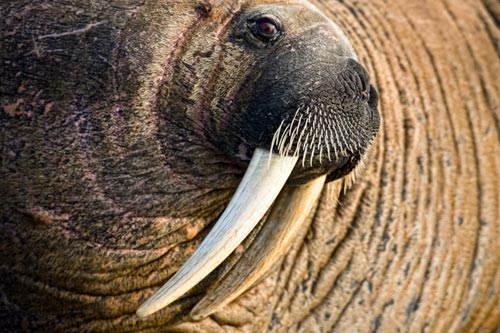
© Michael Poliza Photography All rights reserved.
From the book ANTARCTIC: Portrait of a walrus (Odobenus rosmarus), one of the largest seal species in the world. Males can weigh as much as 1800 kg (2 tons) and the tusks, elongated canine teeth, can grow as large as 1 meter (3 feet) in males. Walrus Island, Hudson Bay.
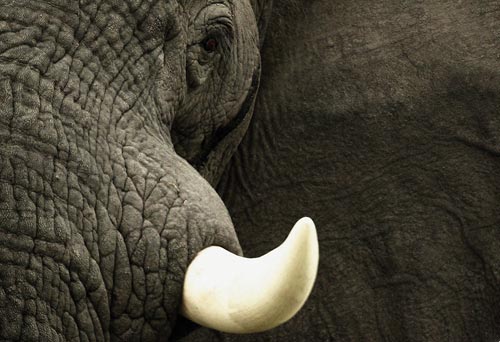
© Michael Poliza Photography All rights reserved.
From the book AFRICA: Elephant portrait, Vumbura, Okavango Delta, Botswana
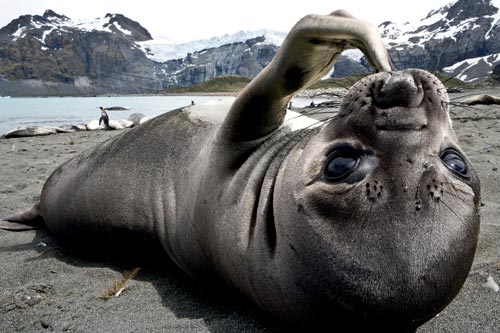
© Michael Poliza Photography All rights reserved.
From the book ANTARCTIC: An elephant seal (Mirounga leonina) pup is weaned as quickly as 23 days after birth; this one has been left at Gold Harbour, South Georgia.
Q. What was it about that documentary voyage of discovery that motivated your passion for photography? What moved you forward?
A. I asked myself in my mid thirties, “What really makes me happy?” After much soul searching I realized that being in nature is really important to me. So starting the STARSHIP Project was really a way for me to see a large part of the less traveled world and I found that taking pictures along the way very rewarding. And the first “serious” digital camera bodies, like the Canon/Kodak DCS560 had just arrived on the market (that was 1998), so being able to share that digital experience on a daily blog (the name “blog” did NOT exist at that time) made it even more exciting.
Q. How did you learn the technical aspects of photography and what are the most important aspects of what you learned about your equipment?
A. I was all ways very comfortable with all kinds of gadgets, so understanding the technical basics of photography came very easy to me. It’s very much learning by doing and that also applies to the digital aspects of things.
Q. Did you have photographic mentors and how did they help and inspire you?
A. I had a few friends that were photographers and every once in a while I picked up a tip or two, but most of them were in advertising and working in a studio environment, so that really didn’t help me a lot. But I think it’s fair to say that I owe some inspiration to David Doubilet. His underwater photographic style is atypical. The images had a magical dimension to them–special lighting or special framing. Something was different!
When I moved to South Africa in 2002, I spent much of my time in the bush. It was then that I started to playfully experiment with my photography. I wanted to emulate the atypical image compositions of David’s within my own images. I set out to capture a new look to the age old subjects of wildlife and landscape photography.
Q. Are you a source of your own inspiration?
I believe so, and shooting digital really helps in that regard. Having an opportunity to see the image on the LCD screen right after I take the shot usually inspires me to try something different; change the angle a bit, go closer, improve the shot further, etc., etc. Now in nature, you can often lose your opportunity within seconds, so that doesn’t always work, but it’s the catalyst to the flow of ideas.
Q. What was the subject of the very first photograph you shot—the one you felt “jump started” your career as a photographer?How has your technique or style changed since that first shot?
A. That’s a difficult one. There was not a specific image that got it all started. As to my style, I think it’s still a work in progress. But please don’t forget that as a wildlife photographer, I am very much an opportunist. Often a special moment only lasts for a fraction of a second. You miss that moment–you don’t have your shot! So as much as I have hopefully developed my own style, I am also very dependent on what nature provides me.
Q. You have a remarkable “eye” for color and composition. How did your style and artistic approach to photography develop? What are the key photographs that exemplify them?
A. Well, I believe my style only developed about 6-8 years ago. I was photographing African wildlife and thought, there are a million pictures of elephants and lions out there. I saw no point in capturing just another image of them unless they looked different. So I tried looking at wildlife more in an artistic way and less in a documentary way. Is that something I learned? I don’t think so. I think that was just there…
Q. Because we live in a digital world, to what degree are photo enhancing techniques used, if any, to produce the final images?
A. Not much. I am shooting RAW, so obviously I will make some small adjustments in the white balance, shadows and lights, maybe a bit of noise reduction and/or sharpening, but in general I try to show the image as my own eyes saw it at the time of capture. And that clearly means I would not make any major changes with the original photo, just as adding or deleting animals or changing their positions.
Q. You have had images in your “mind’s eye”; you’ve waited patiently for just the right light, the right shadows or colors to capture that image. What percent of your images came “out of left field”—the unplanned, unexpected treasures?
A. I think about 90 percent is a product of LUCK, which by my definition means, “When preparation meets opportunity”.
There are a few images that I had hoped for and anticipated, like the walking elephants and their shadows aerial shots, but hardly ever do I have a specific shot in mind when I wake up in the morning.
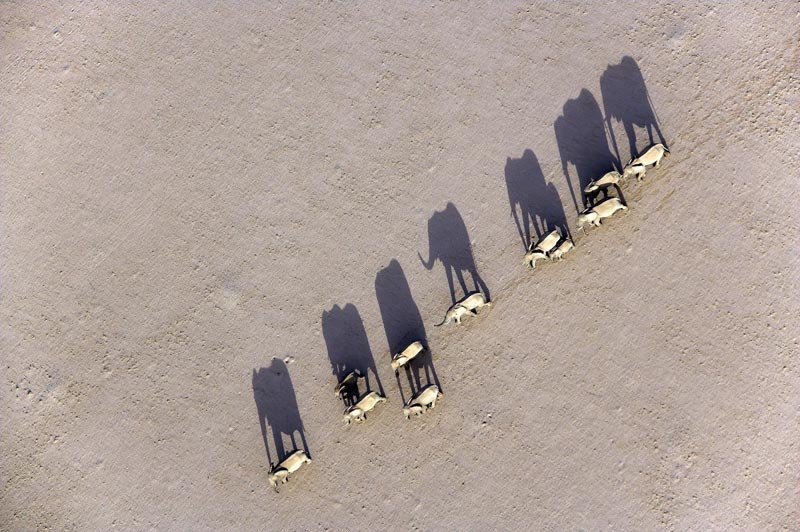
© Michael Poliza Photography All rights reserved.
From the book AFRICA: Marching Desert Elephants, Damaraland, Namibia
Q. What has been your most dangerous encounter while photographing? How about your funniest encounter and the one that most touched your heart?
A. So far, animals have not put me in any real danger. But a few years ago I was very keen on photographing walruses for my ARCTIC /ANTARCTIC book. To get to some of the more remote islands in the Hudson Bay involved chartering one of the most perilous boats I have ever seen. It was the only floating thing within 500miles, so I had no choice. In the middle of our 10 hour trip to the Walrus Island, the weather changed and we found ourselves in the midst a very rough storm. We ended up canceling the expedition and made it home in one piece, but not without a few very scary hours.
Q. Among the thousands and thousands of photos you have obtained over the years, what are your favorite subjects? What makes you return to those themes?
A. AFRICA and the large cats really do it for me.
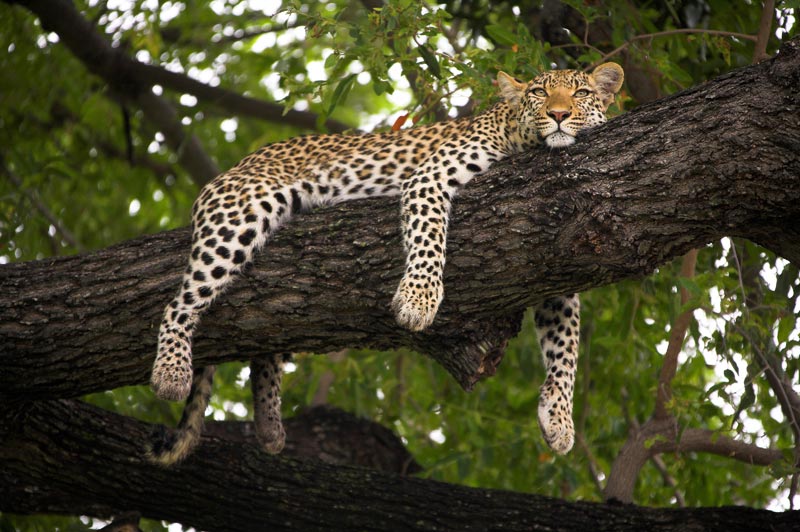
© Michael Poliza Photography All rights reserved.
From the book AFRICA: Relaxed female Leopard, Mombo, Okavango Delta, Botswana
Q. Though your books are very limited in text content, what would you want your images to convey to the viewer if there were no text at all?
A. I intentionally wanted to let the images speak for themselves. I hope that if something touches you emotionally and you are able to connect with it, you will then be willing to defend it and fight for it. It is my hope that my images convey exactly that. And it is my ultimate hope that people will engage with those feelings, so they take on some responsibility to keep our world intact.
Q. If you were to mentor an aspiring photographer, what words of wisdom would you share with them? How would you encourage them to grow and become the best they can be?
A. Play and experiment and find your own style. Know the rules, apply them, and then break them again and again. I believe I have quite a few images that depict that belief, like the portrait of a lion that I took without showing its eyes.
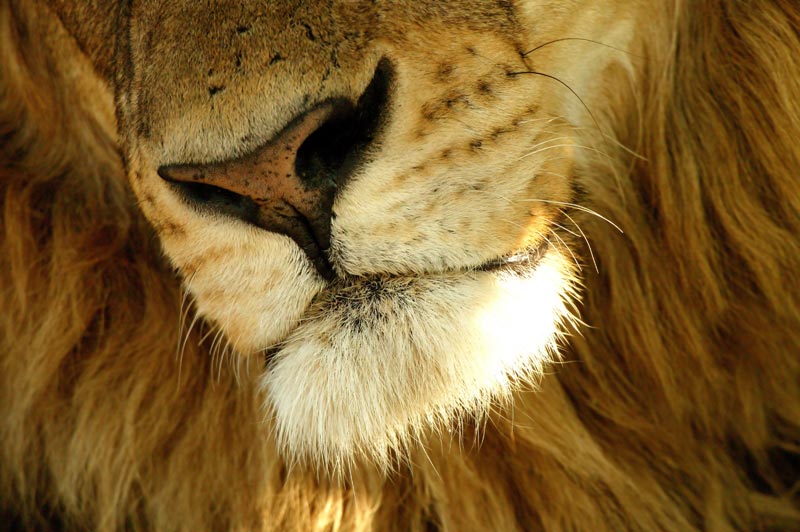
© Michael Poliza Photography All rights reserved.
From the book AFRICA: Lion king, Duba Plains, Okavango Delta, Botswana
Q. What or where comes next–what exploration, what discovery, what stunning and unique images do you want to capture? What is your “heart’s desire”?
A. Well, being a wildlife photographer is not a get rich concept; it’s more a lifestyle concept. I love traveling and the photography comes very easy for me. It’s really not a job being in the field. The work starts when coming home to the desk….
I just want to travel as much as possible to the last true wilderness areas and capture their essence. I will begin shooting in AUSTRALIA soon.
In terms of book projects, books on Kenya and East Africa are in the pipeline.
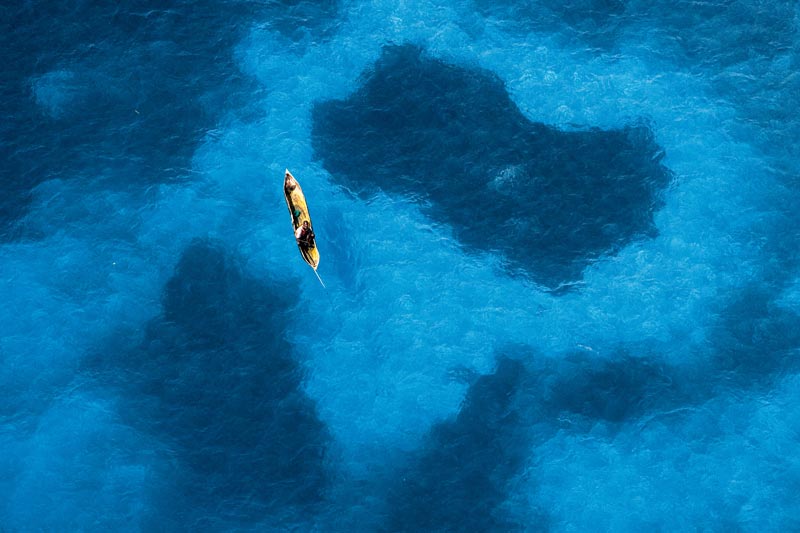
© Michael Poliza Photography All rights reserved.
From the book EYES OVER AFRICA: South of Vamizi, Mozambique
In the clear waters that this area is renowned for, a local fisherman and
his hollowed out tree trunk canoe appear as if they are floating on air.
An Interview by Apogee Photo Magazine Editor, M. Meier

Leave a Reply